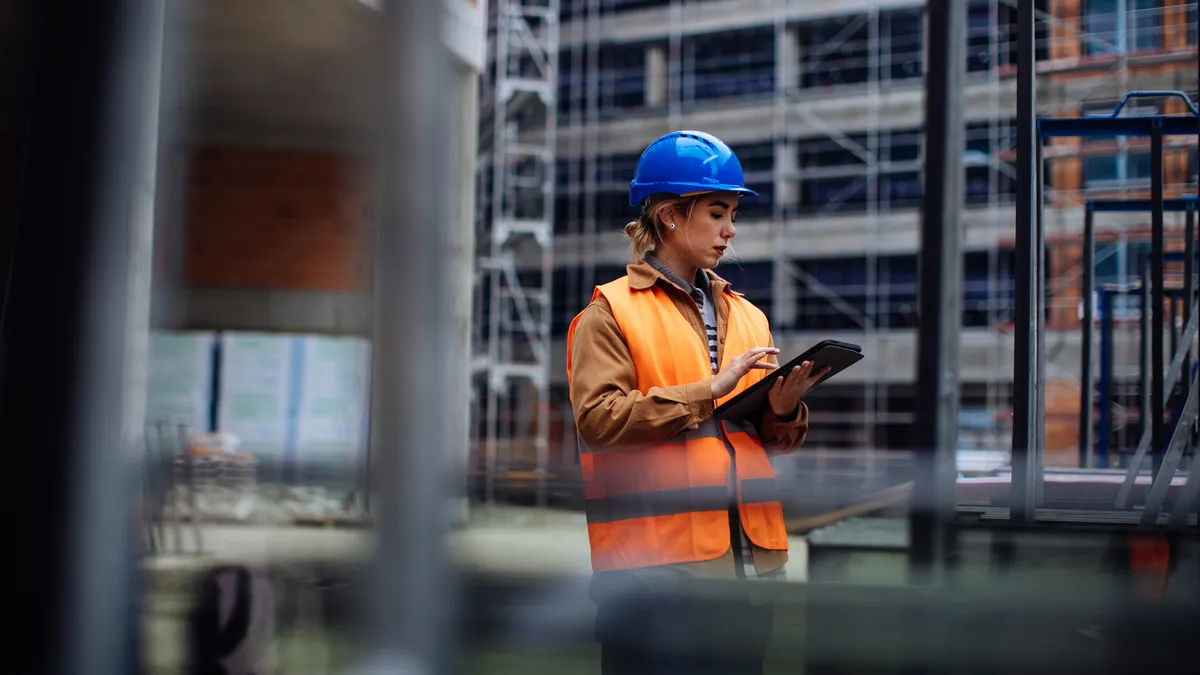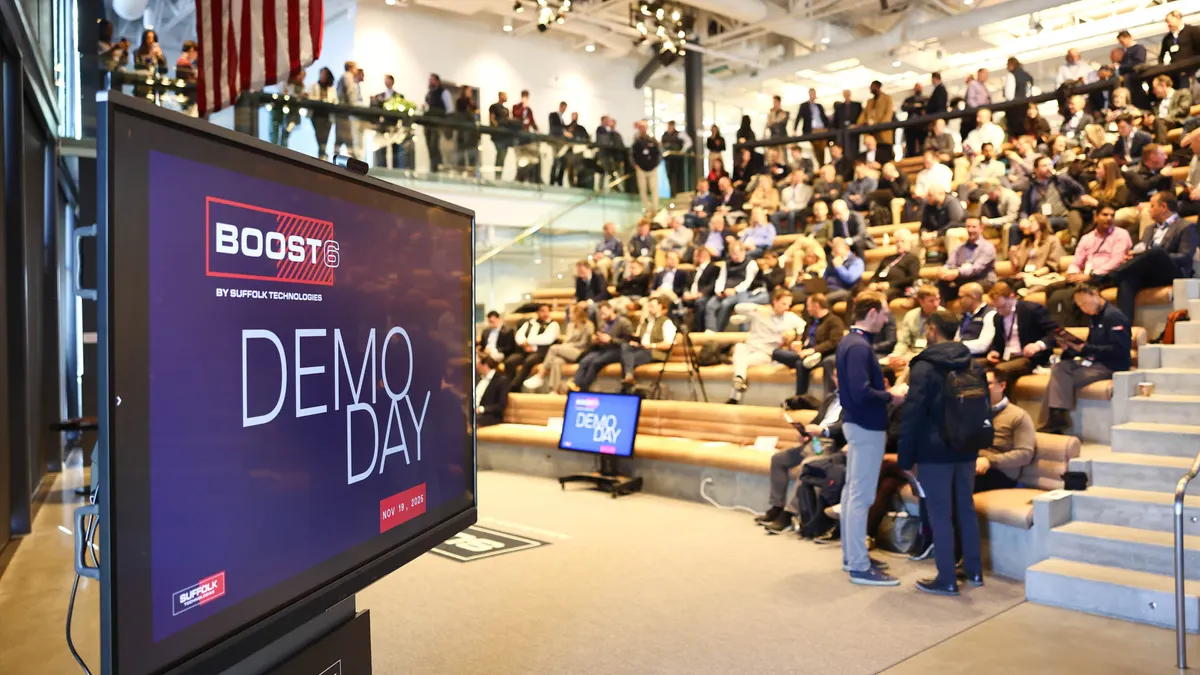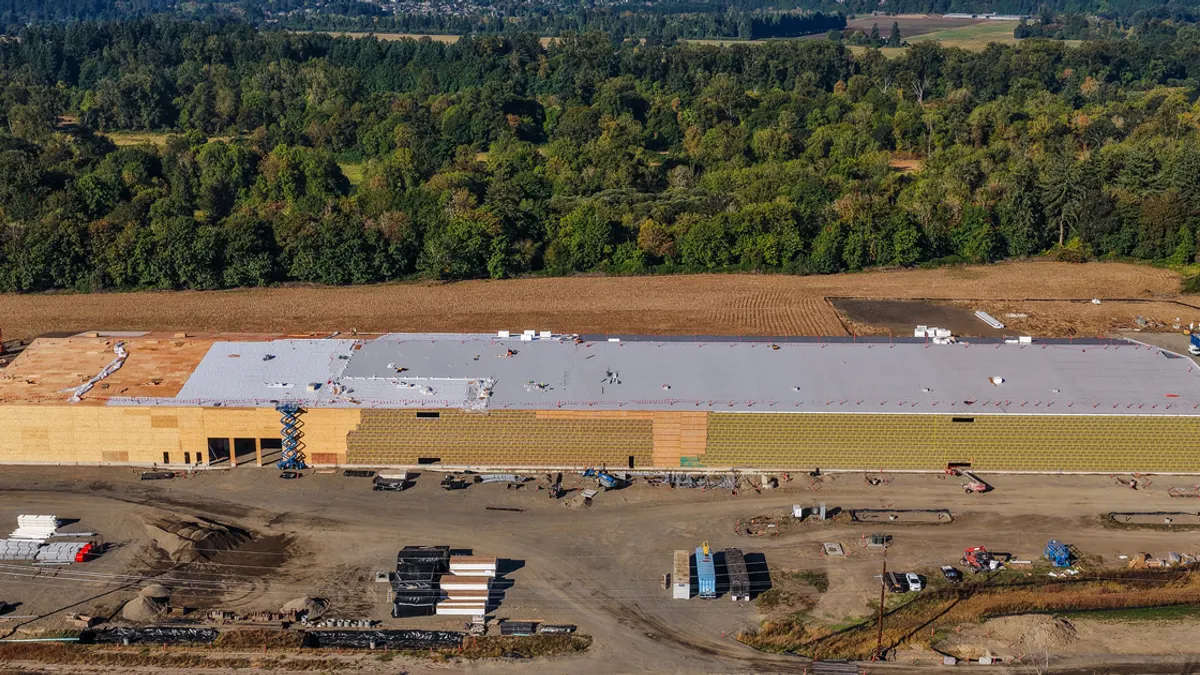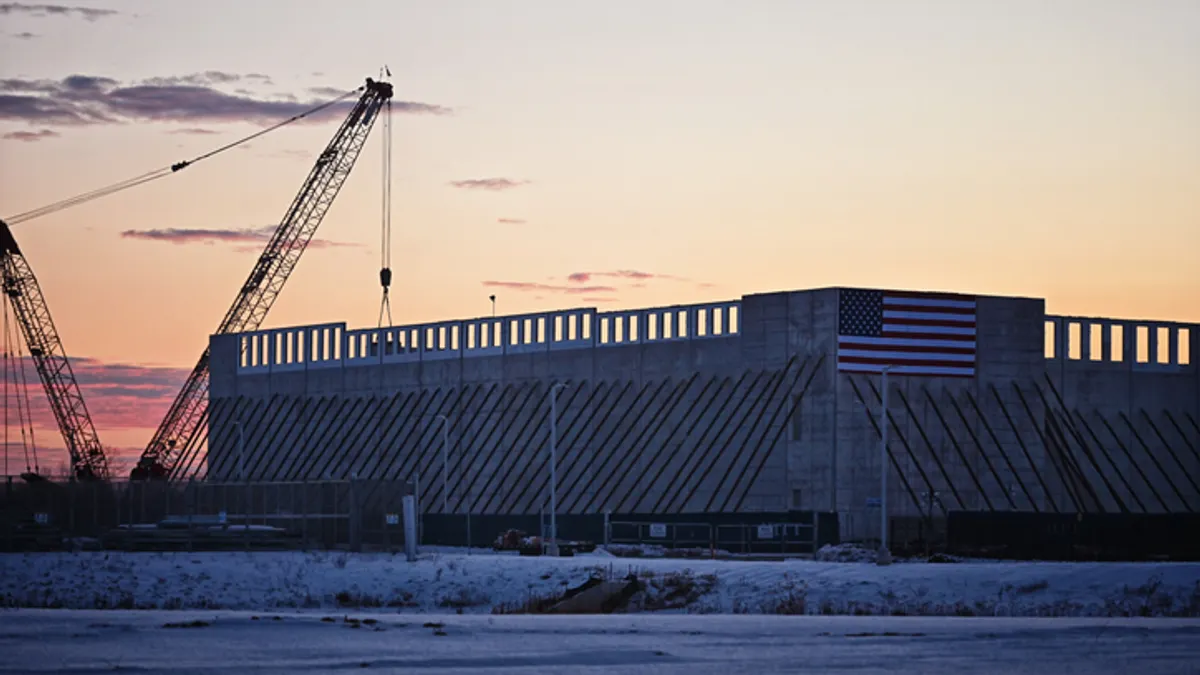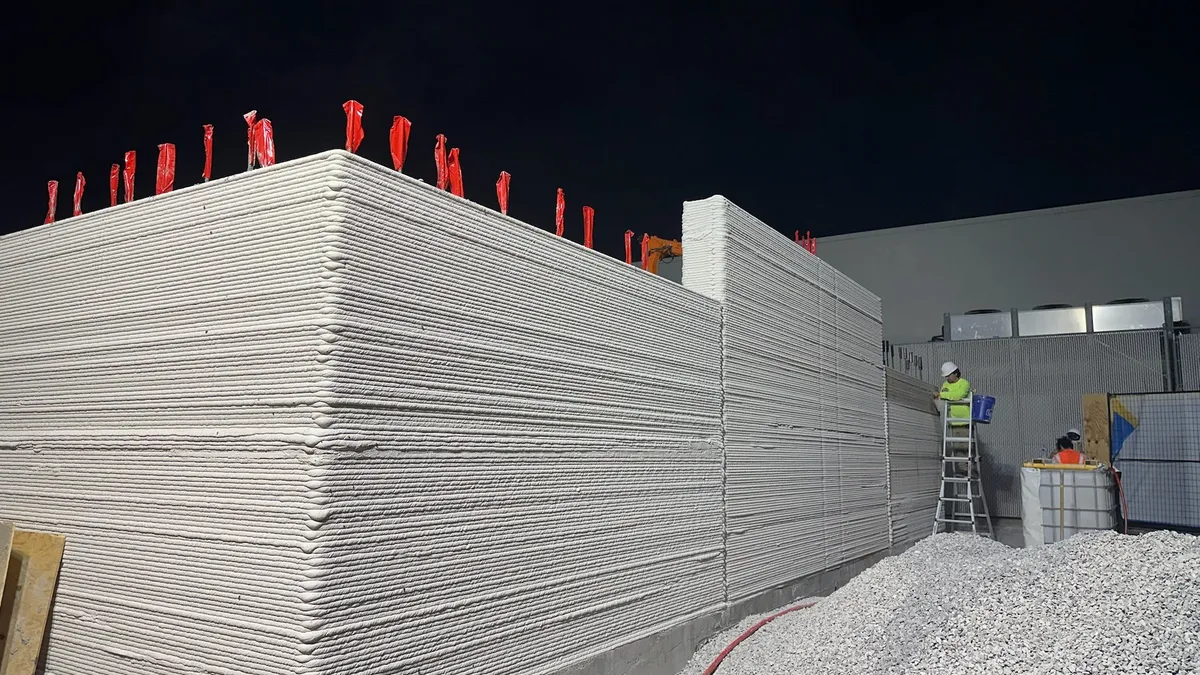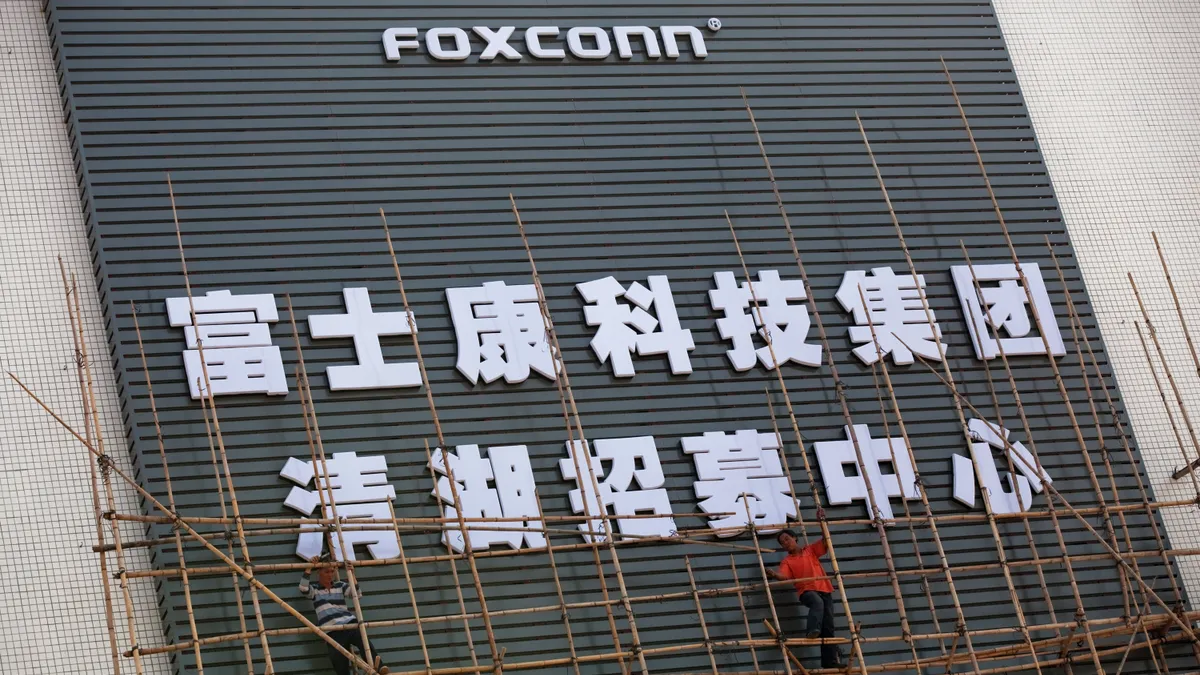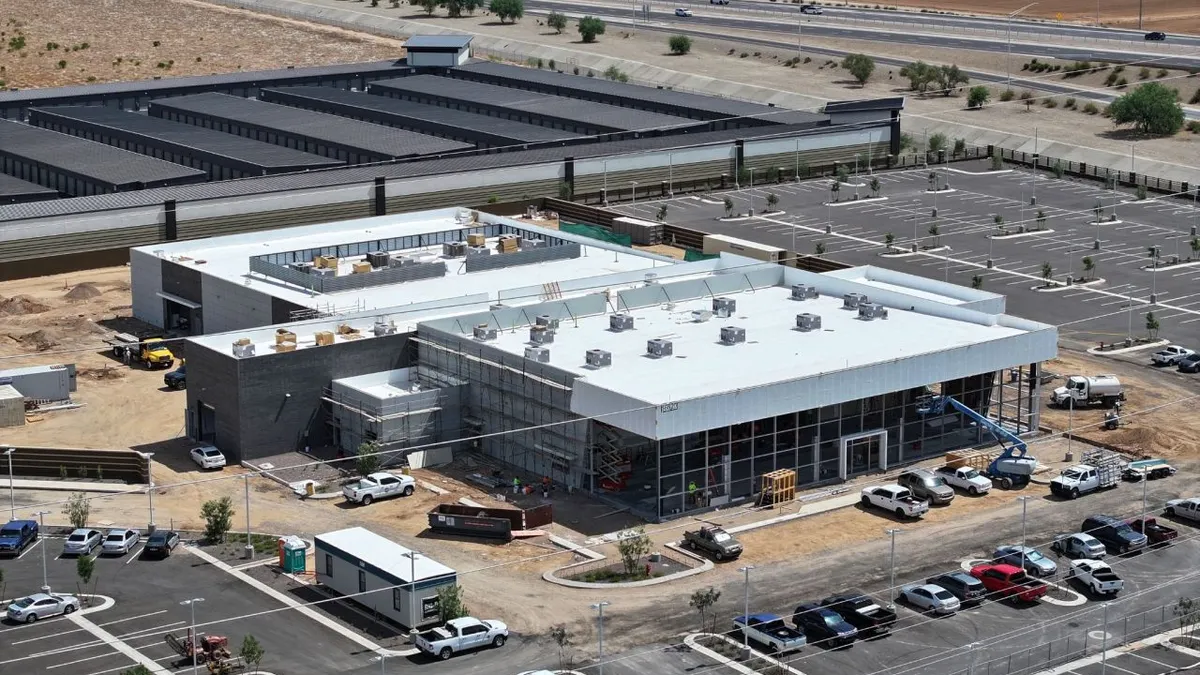When it comes to venture investing in construction, contractors have operated like they do in the field. Instead of looking at shiny new toys, they’re deploying established methods to help turn a profit.
This approach has emerged via two key trends: Builders are ramping up their own venture funding arms, and they’re looking for startups that are commercial-ready, rather than starting out.
Take DPR Construction. Its Redwood City, California, headquarters is located in the heart of Silicon Valley. Its inhouse investment arm, WND Ventures, has been active since 2015, according to its LinkedIn, and has put money toward established startups such as reality capture platform DroneDeploy, AI-based document tracking tool Trunk Tools and automated layout robot creator Dusty Robotics, according to the company’s portfolio.
Another contractor on the hunt for tech companies with a proven track record is Suffolk Technologies, the venture capital offshoot of Boston-based Suffolk. The firm runs its BOOST accelerator program annually, tapping promising startups to deploy existing solutions on jobs while offering not only investments, but coaching from the inside out.
To date, the cohort has featured 30 different startups, according to its website. Suffolk Technologies initially invests $100,000 on a post-money SAFE, or a Simple Agreement for Future Equity, which allows an investor to put money into a company and solidify the percentage it will own when that cash is converted to shares.
Graduates of this program include San Francisco-based Canvas, which creates robots that help with the drywall process. The company, which focuses on drywall finishing, completed a $24 million Series B in April 2021, in which Suffolk Construction participated. Since then, Canvas has partnered with drywall manufacturer USG and construction equipment manufacturer Hilti in 2023 and released a new robot in 2024.
Then there is San Francisco-based Webcor, which is a new player on the block — the builder unveiled Webcor Ventures, its investment offshoot, on Nov. 15. It acquired a 10% stake in the Oakland, California-based modular construction firm R2 Building as its inaugural investment.
And even Turner Construction, the New York City-based building giant, has gotten into the game, launching Turner Ventures on March 17.
Anatomy of funding
Funding rounds for startups can be thought of as a company’s maturity indicator. A company raising a pre-seed funding round, for example, can be seen as in its infancy and is reflected as such in its investors — friends, family, supporters and the founders themselves. Additionally, some companies never extend beyond Seed funding into later rounds, like Series A.
Construction Series B deals are on the rise
By contrast, a company raising a later stage round, such as Series A or B, is more established and can attract the presence of other, larger investors. These more mature rounds also tend to attract more money. One example is Buildots, based in Tel Aviv, Israel, which delivers an AI-powered project tracking solution. Buildots completed a $45 million Series D funding round in May, which brought its total capital raised to $166 million.
Indeed, even Series A rounds must demonstrate not just a great idea, but also a strong strategy to generate profit. This differs from Seed funding, where a company raises cash to finance its first steps, such as establishing a final product and its target demographic. Taken together, this means Series A funding also comes later in a firm’s lifecycle.
Corporate investments in Series A and later funding rounds take up larger share of investment volume
“I think startups are beginning to realize that there are no disruptions in this space,” said Dan Laboe, founding principal of Nymbl Ventures. “It's more of a slow transformation into the future.”
Over the last five years, these firms have matured during the COVID-19 pandemic, international conflicts and now, tariff-induced economic uncertainty.

Observers say that over the next five years, new opportunities are available for firms — and contractors in particular — that put in the grunt work to identify solutions that are viable in the field today.
Gonzalo Galindo, the head of Cemex Ventures, the contech-focused venture capital arm of Monterrey, Mexico-based building materials firm Cemex, said that firms that make it to the Series B stage have had to overcome obstacles already.
“It's a normal course of business, because many of the people in Series B have been, for a year to a year and a half, trying to raise money,” Galindo said. “Those which are actually still alive are showing that they are resilient, that they know how to manage business, how to manage the funding, and certainly will be more prone to get money these days.”
Builders seeking solutions
Along the way, these tech survivors have established a toehold in construction by tailoring solutions to the industry’s endemic challenges — labor shortages, environmental unpredictability and cash bottlenecks — that threaten to derail projects, either on the jobsite or before they even start.
In the current environment, artificial intelligence reigns supreme as the most hyped technology. Additionally, robots, software platforms and physical equipment also play an important role on jobsites.
For example, Providence, Rhode Island-based Gilbane Building Co. used New York City-based Trunk Tools, which tracked around 21,000 discrete documents on the $456 million renovation of Milwaukee’s Baird Center to save money. Another — Zachry Construction, based in San Antonio — used Menlo Park, California-based Alice Technologies to speed up its estimating process, which helped the builder save 28 days on a $149 million highway project’s timeline.
Follow the money
The broader venture capital landscape is flush with cash — global venture funding reached $321 billion in 2024, doubling over the last decade, according to Crunchbase. However, contech makes up a more diminutive portion of the total — the sector managed to pull $3.1 billion in 2024 following a sharp downturn in 2023, according to analysis by Cemex Ventures.
Nevertheless, construction, with its thin profit margins and a reputation for doing things the way they’ve always been done, has become a favorite target for startups looking to disrupt it, due to its well-known technology adoption gap. While that gap narrowed during the pandemic, critics say construction still lags far behind other industries in productivity gains due to integrating new technologies.
With that in mind, experts say that though the sector is small, it is mighty, and ripe with opportunity for those who seek it.
“I think 2025 is going to be a transitional year for really understanding where the technology investments need to be made,” Nymbl’s Laboe said.
Bigger kids on the block
This is where more mature startups can prove attractive to builders. Laboe said that the later-stage startups represented a quid pro quo relationship with builders, who can capitalize on the immediate rewards of a commercially ready product while boosting a startup’s growth trajectory.
It’s also a reassuring sign for other builders if they can see a contractor investing in a product, Laboe said.
“These are long-standing industries and industry players. It takes a lot of time to gain their trust in this space,” Laboe explained. “Having corporate backers in your investments gives them immediate economic reason to adopt the technology and help guide it toward the future.”
Where contractors fit
The question then becomes how are contractors getting involved? And how are they putting their money to use?
Atul Khanzode, CTO at DPR Construction works with WND Ventures to seek out new solutions for the firm to leverage on its jobsites. He maintains that there’s a time and place for the cash, as long as it’s paired with boots-on-the-ground experience or even experimentation.
For those firms that already have financial backing from strategic investors, WND and other contractor venture arms have an interesting value proposition beyond dollars: contractor input.
“They are very interested in our opinions about how useful their technology is or not, and want to partner with us even sooner,” Khanzode said.
Wan Li Zhu, the co-founder and managing director of Suffolk Technologies, the venture capital offshoot of Boston-based Suffolk, offered a different sort of analysis.

The firm’s venture arm, Zhu said, sits at the intersection of the funding ecosystem to be an early-stage validator. Some startups, he said, come in with grand expectations.
“A lot of entrepreneurs that don't come from construction may have a perception that it's trillions of dollars of volume, so there must be a significant technology budget. That's often not the case, and the fragmentation is part of the friction as well,” Zhu pointed out.
So, what’s next? The simple answer, experts said, is more investor cash, particularly fueled by the AI boom, a sentiment that has borne fruit through the first quarter of 2025. Already, investors have pumped $521 million into AI-based contech offerings, the highest amount since 2021.
And those investors seem to be willing to stay the course — a survey from Burlingame, California-based Zacua Ventures, an investor in the contech space, showed that few are backing down. Its data showed that 90% of surveyed contech investors intended to either increase, at 47%, or maintain, at 43%, their capital deployment in 2025.
More investors look to increase or maintain capital expenditure
“This trend reflects the recovery in early-stage ConTech investment sentiment observed since the sharp decline in 2022, indicating growing confidence in the market’s long-term potential,” the firm wrote in a summary of its results.
Zhu, for his part, is bullish on innovation.
“I think the next five years are going to look very different from the last two decades in construction time,” Zhu said.
Correction: Suffolk's BOOST program is an accelerator. This story has been updated to reflect the number of companies that have been featured in the BOOST program.



